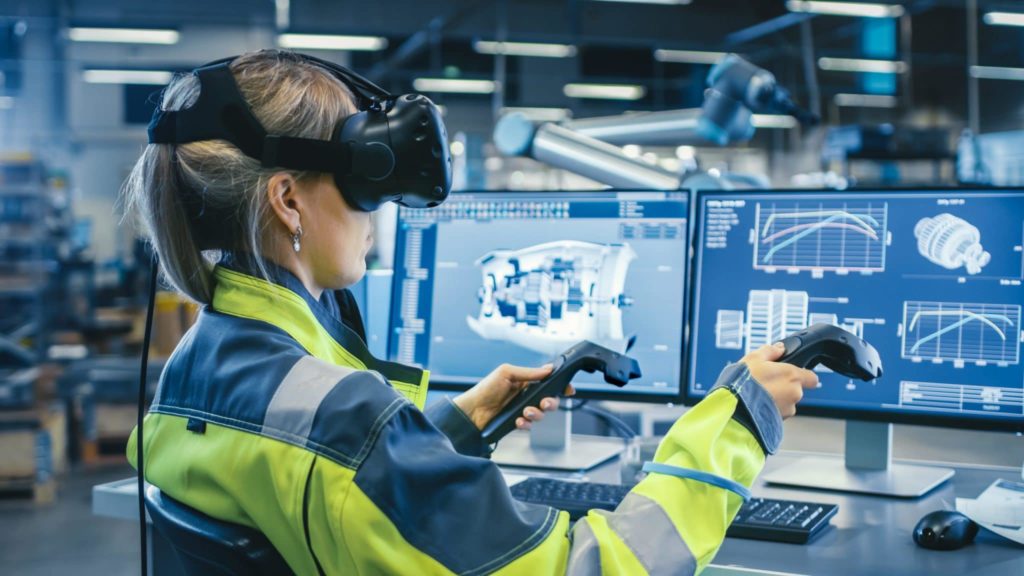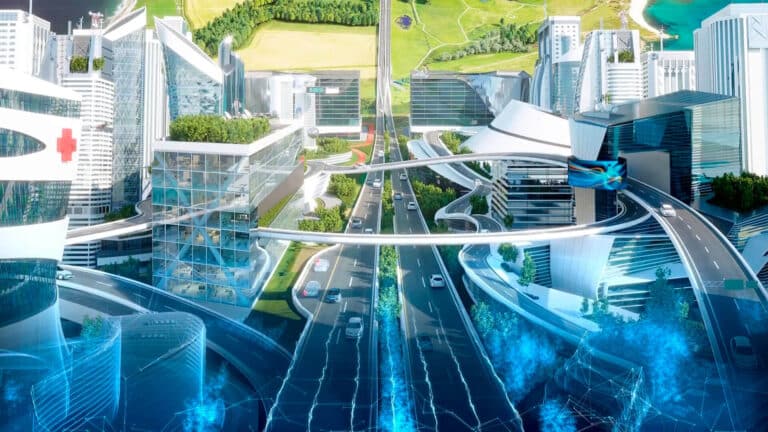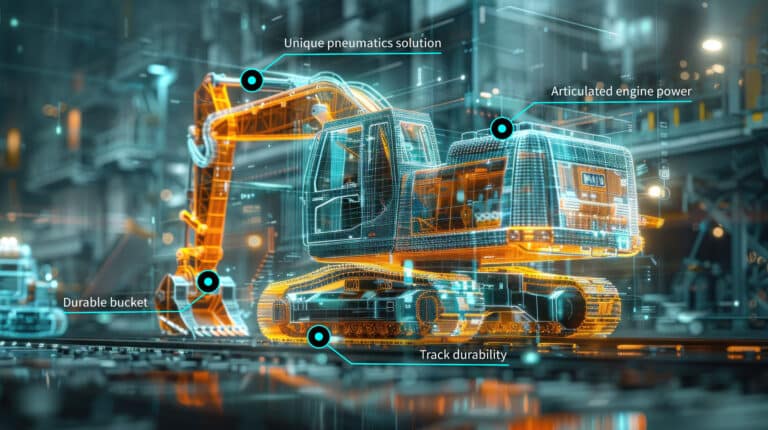Last Summer we interviewed researcher and technologist Aki Järvinen from Digital Catapult, and discussed the benefits and use cases of immersive technologies within creative and manufacturing industries in the UK.
Could you tell us a little bit about yourself? What has been your journey to date working with immersive technologies?
I studied digital media, video and mobile games. I’ve worked in the games industry in the UK and Finland, and at universities in Finland, Denmark and the UK, teaching games, design and digital media. About five years ago I made the switch back from industry to academia, pivoting to immersive and researching VR and AR, specifically. If I had a superpower, it’d be my ability to translate academic insights into the world of practitioners, and vice versa.
What does Digital Catapult do? What is your role within the company?
I’m a researcher and technologist at Digital Catapult, which is a part of a network of nine not-for-profit R&D organisations across the UK, set up by the UK government with the goal of helping UK companies grow through adoption of emerging technologies. Each of the Catapults has their specific focus area, for example Connected Places, Satellite, Energy and High Value Manufacturing.
The Digital division is organised according to technical layers, for example AI and Machine Learning, IoT etc, and focuses on two key sectors: Creative and Manufacturing. I work in the Immersive team of the Digital division, which includes technologies such as AR, VR and haptics. We take part in R&D projects in the UK and Europe, work on commercial projects with clients, and we have a lab in London to which we invite companies to experience emerging technologies for themselves. Our focus at Immersive is very much in the experience and feasibility side of things: how can you transform your business with these new tools?
Typically we develop riskier concepts, for example, mobile AR applications, into prototypes and then hand them over to clients, who decide whether to proceed with the adoption of them. We can then tap into our network of partners who can take over the development of apps or other technologies.
We’ve done a lot of work in the creative industries vertical, mostly because that space lends itself well for stand-alone immersive projects – for example virtual experiences. Recently we consulted on, curated and organised a retrospective of best British creative immersive experiences, in a virtual exhibit called Immersive Arcade, in partnership with Museum of Other Realities, a VR based gallery.
Why should we be excited about immersive technologies in the manufacturing industries?
Often the added value of immersive comes in the early stages of the manufacturing process, such as prototyping and design. For instance, companies like Ford have said that whereas before, with traditional 3D software, when their car designers wanted to create a new concept car and needed to create a sketch of it in actual size and shape, it might have taken months of work and tens of iterations. Now, with Gravity Sketch, an immersive UK company operating in the automotive industry, Ford can create the sketch in just a few days – a huge saving in time and expense.
Adding value in the production lines takes more effort and requires other components, such as sensors, real-time data and 5G, with the immersive providing the presentation or interaction layer. But when the time saved and travel reduced can be quantified, then the immersive technologies can save time and money.
I try to be very transparent about where immersive truly adds value, instead of it being a gimmick. We do a lot of work on research reports, constantly tracking what is happening and where we document the proven use cases in manufacturing and immersive, for example data visualisation and remote management. Then we try to identify the potential use cases for a given vertical.
How can immersive technologies help solve manufacturing companies’ problems, or increase productivity?
If there is data that can be visualised in 3D space, then immersive can, due its spatial nature, make the data more accessible, informative, useful and productive. But then again you have to have that data from somewhere, and ideally it should be real-time data, which adds complexity. This said, it’s not rocket science, but rather a matter of bringing technologies together. Data, or the numbers on value added, boils down to how analytical and numbers-driven a particular company has been in the past. If they have been able to quantify how many resources, or how much time a process requires, then they will be able to compare it with an immersive application, and make conclusions. But if this data is missing, of course it is hard to prove the value of a use case.Immersive can also contribute in the case of remote access. For example, in the case of a factory with substances, or where it is important there is no wastage such as energy leaks. If you have sensors based all around the factory to pinpoint where the leaks are, then we come to the notion of digital twins. If it makes sense to build that digital twin in a 3D format where it can be accessed via immersive technologies, then in certain cases it would add value because you could identify the precise location of the problem and remotely manage it in a more effective way. These types of cases are mostly at R&D stage at the moment.

Could you share some examples from the UK about recent, successful adoption of immersive technologies by a manufacturing company?
One example would be the UK nuclear industry; there are some interesting opportunities there. For example, when nuclear plants are decommissioned, it is a highly hazardous process, and there is currently a project looking at how remote controlled robots could be used with VR to inspect things in the process. Although the nuclear industry in the UK is quite conservative, there are global associations that are pushing for the use of immersive, for example VR training for nuclear plants.
Another example of immersive in manufacturing would be the UK company Virtalis, based near Manchester, who were working with Siemens. Virtalis have developed a platform allowing remote design and data visualisation, and their solutions are applicable to all kinds of screens, not just headsets but also large screens, to broaden the accessibility.
In another project we have combined 5G, IoT and immersive data visualisation to enable more informed and quicker decisions. The key is to find cases where the data really adds value when it’s seen in three dimensions.
Are there barriers for manufacturing companies adopting immersive?
The willingness of companies to take the leap of faith on a new technology often boils down to individuals that have personal, hands-on experience with the technology. This is why we have the lab in London: to help give people the experience, and also to show them how much technologies have evolved. If you tried VR five years ago it’s very different to what is available now!
On the manufacturing side, when there is a proven value added, there is generally no problem to convince engineers to wear headsets, because they can see it is enabling them to perform in their jobs in a more productive way.
Has the use of immersive technologies had an impact on companies’ sustainability?
It’s a complex topic. For example, cloud technologies are marketed as sustainable, but it can also be very data intensive, so you have to make some calculations off-setting travel against data and energy consumption. We have done a collaboration with a start-up accelerator in India, looking at sustainability from an environmental point of view, which is still in its early days. These are the kinds of projects where the different technology layers come together, and we’re working together with the different divisions at Catapult.
Have you seen any changes in companies adopting immersive technologies since the pandemic hit last year?
During the pandemic, we’ve been, out of necessity, exploring alternative business and revenue models because we haven’t been able to run the usual kinds of introductions in our lab. For example, in August 2020 we organised a remote hackathon about hand-tracking and VR with partners from Northern Ireland, creating quick prototypes with students and other VR enthusiasts. We also surveyed people who have VR headsets at home in the UK, to find out what they consume, and over a half of them said they had consumed more VR content during the pandemic.
In the architecture space, I have also heard anecdotes of smaller architecture companies buying Quest headsets for their staff during the pandemic to do remote internal design sessions in VR, bringing their assets into VR to assess the scale, and how light works – which can be really powerful in immersive.
We are now beginning to see some light ahead of the tunnel; and although it is still too soon to tell about any longer-term effects, I do have anecdotal evidence that more companies have been looking into immersive and what it might mean, and that probably is due to the pandemic. But what percentage of these inquiries will actually lead into adoption, is impossible to tell so far.
What could Finnish companies learn from their UK counterparts, in terms of adopting immersive technologies?
In the pure skill of making things there isn’t much difference between Finnish and UK companies; the Finnish workforce is very capable, there is a strong engineering tradition and so on, but the advantage of the UK is being a much larger economy and ecosystem when it comes to level of investment and R&D.
If I was a company in Finland, I would track a market like the UK to see what companies are doing in the immersive field. There is quite a bit of investment here in the R&D and immersive tech, much of it funded by public institutions, and therefore much of that information is available in the public domain. It’s beneficial to understand where the market is heading, thinking of ways to leverage that, and choosing what to invest in.
Read more
- The UK Creative Immersive Landscape 2020 report
- Haptics: What the Future Feels Like
- Untangling the requirements of a Digital Twin
- UK Immersive Tech: VC Investment Report
- 5G festival

